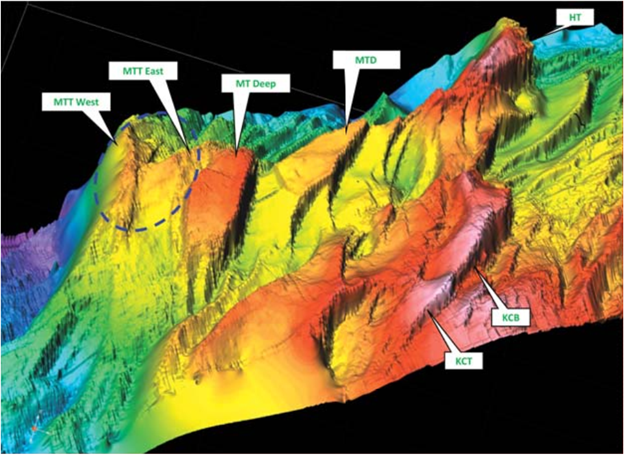Forecasting the presence of hydrocarbon in Moc Tinh Tay prospect, block 05-3, Nam Con Son basin by 3D petroleum
Abstract
Moc Tinh Tay is located to the west of the Moc Tinh discovery, Block 05-3, Nam Con Son basin. Results of exploration wells and production wells clarified the petroleum potential of Block 05-3, especially Moc Tinh area, including Moc Tinh Tay structure.
The purpose of this paper is to understand, by 3D basin modelling, the generation, migration and accumulation histories of oil and gas from source rock; and evaluate the presence of hydrocarbons in Moc Tinh Tay prospect to minimise the risk of oil and gas exploration in the study area.
In this study, Lower Miocene and Oligocene source rocks are fair to very good source richness and essentially contain kerogen type III and
a mix of type III and type II and has fair to good gas generation potential. Oligocene source rock has generated hydrocarbon since 24 Ma. It is
in oil window at 13 Ma, and reached dry gas phase at 10Ma to the present time. The Lower Miocene source rock has generated hydrocarbon
since 12 Ma. It is in oil window from 5.5 Ma and in gas phase in almost the entire area at the present.
References
Thomas Hantschel, A.I. Kauerauf. Fundamentals of basin and petroleum systems modeling. Springer Berlin Heidelberg. 2009.
Talisman Joint Study. The tectonic and stratigraphic development of the Nam Con Son and Vung May basins. Final report. 2011.
BP sub-Surface team. Block 05-3 Moc Tinh reserves report. 2006.
J.J.Sweeney, A.K.Burnham. Evaluation of a simple model of vitrinite refl ectance based on chemical kinetics. AAPG Bulletin. 1990; 74: p. 1559 - 1570.
G.R.Beardsmore, J.P.Cull. Crustal heat flow: A guide to measurement and modelling. Cambridge University Press. 2001.
R. L. Folk. Petrology of Sedimentary Rock. Hemphill Publishing Company, Austin, Texas. 1974.

1. The Author assigns all copyright in and to the article (the Work) to the Petrovietnam Journal, including the right to publish, republish, transmit, sell and distribute the Work in whole or in part in electronic and print editions of the Journal, in all media of expression now known or later developed.
2. By this assignment of copyright to the Petrovietnam Journal, reproduction, posting, transmission, distribution or other use of the Work in whole or in part in any medium by the Author requires a full citation to the Journal, suitable in form and content as follows: title of article, authors’ names, journal title, volume, issue, year, copyright owner as specified in the Journal, DOI number. Links to the final article published on the website of the Journal are encouraged.




